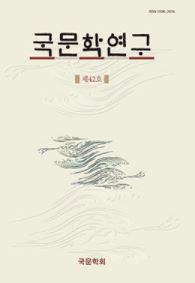본고에서는 李衡祥의 『芝嶺錄』 제6책에 나란히 실려 있는 차운시가인 <次農謳>와 <後農謳>를 살펴 병와 악부의 단적 면모를 고찰하였다. 이 두 작품은 병와 당대에 가장 성창되던 작품들 중 하나였던 姜希孟의 <農謳>에 차운한 것으로서, 고전시가의 수용 및 변용과 관련한 병와의 실천을 보여주는 중요한 예라 할 수 있다. 이형상의 <차농구> 연작은 첫째, <농구>라는 조선시가의 고전을 수용한 결과물이되, 고전의 단순 모방에 그치지 않고 형식과 구조의 개성적 변용을 보여준다. 형식적 측면에서는 여음이나 민요적 리듬 등 국문시가적 특성을 포착하였으며, 구조적 측면에서는 원시가의 순서를 나름의 원리에 의해 재편하기도 하고, 원시가와 상이한 시간적 구조를 만들어내기도 하였다. 둘째, <차농구> 연작은 내용면에 있어서도 원시가와 변별되는 면모를 보여준다. 그것은 교훈성의 강화와 장르성의 다양화라는 두 가지 측면으로 정리된다. 이 중 교훈성의 강화는 17세기 농촌경제의 피폐화라는 사회적 요인과, 향촌 우거라는 작가의 전기적 요인이 작용한 결과로 보이는 바, 나름의 시의성을 지니고 있다. 한편, 장르성의 다양화는 문학성과 관련된다. 특히 <후농구>에서는 사실의 교술적 서술 및 정서의 서정적 서술이 복합되는 양상을 보였는데, 이러한 다양한 장르성은 교훈적 주제를 보다 다채롭게 형상화하는 데 이바지함으로써 작품의 문학성을 강화하였다고 볼 수 있다. 셋째, <차농구> 연작은 형식과 내용의 양면에서 고전을 창조적으로 계승하였을 뿐만 아니라 <농가월령가>와 같은 후대 국문시가와도 연계된다는 점에서 더욱 문학사적 가치를 지닌다. 이렇듯 이형상의 <차농구> 연작은 기존 한시의 단순한 아류작이 아니라, 시의성과 문학성을 지닌 당대적인 작품이자 고전시가사에서 또한 일정한 의미를 지니는 작품이라 평가된다.
This article investigated the characteristics of the Chanonggu series in Jiryoungrok volume 6 by Lee Hyoungsang. The Chanonggu series borrowed Kang Heemaeng s Nonggu, which was one of the most popular poems in Lee Hyoungsang s time. However, the Chanonggu series did not only imitate an existing famous work but also contained their own characteristics through the modification of the classical work. In this series, Lee Hyoungsang reorganized the chapters of the original text and created a different structure from it. He also modified the contents of the original text, intensifying didactic parts and diversifying literary features. Such modifications enabled the Chanonggu series to reflect the author s social circumstances, when the edification of people was more urgent in the deteriorating situation of rural areas. With these formal and content characteristics, the Chanonggu series could also make an influence on Nonggawollyoungga, an important poetic work of the late Joseon era. In conclusion, the Chanonggu series was not a mere imitation of a classical poem but a meaningful work that contained timeliness as well as literary value, achieving a certain status in Korean literary history.
1. 머리말
2. <次農謳> 서문의 내용
3. <次農謳>의 문학적 특성
4. <後農謳>의 특성 및 의미
5. 맺음말
(0)
(0)
